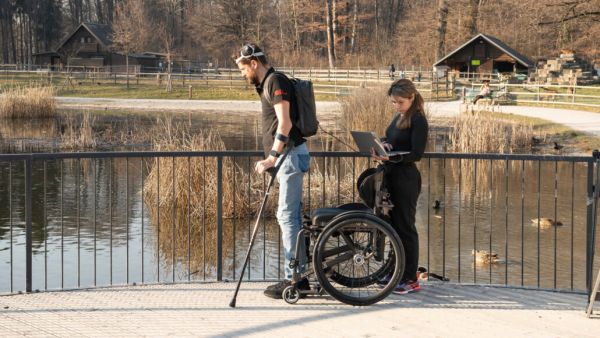ALBAWABA - Dr Grégoire Courtine and his colleagues from the Swiss Federal Institute of Technology in Lausanne have developed and implanted a "neural link between the brain and the spinal cord" that creates a direct neural connection between the two.
The link tracks movement intentions in the brain and wirelessly transmits them to a processing unit worn externally by the person, like a backpack. These intentions are then translated into commands sent back through a second implant to stimulate the muscles.
The research, published in the journal Nature on Wednesday, presented successful results from the Netherlands.
Gert-Jan Oskam, a 40-year-old man, was paralyzed after a motorcycle accident in China over a decade ago, which damaged his legs, arms, and trunk.
Oskam said in a press statement, "My wish was to walk again, and I believed it was possible," adding, "I had tried many things before, and now I'm learning to walk naturally again."
Previous studies have shown that targeted electrical pulses can stimulate the necessary leg areas for walking. However, according to the researchers, this new technique allows for smoother movement and adaptation to changing terrains because it reconnects two regions of the central nervous system that were severed due to spinal cord injury.
Oskam had previously received other devices but had to perform specific movements to activate the stimulation process.
Dr. Courtine stated that this stimulation is different because Oskam has "complete control over the stimulation parameters, meaning he can stop, walk, and climb stairs."
After the surgical procedures to implant the devices, the neural communication channels were established rapidly, and Oskam took his first steps within one day of training.
The communication channels remained active for over a year, even during Oskam's time at home. Additionally, walking independently with the assistance of the "digital bridge" post-surgery also helped him regain enough strength to take some steps, even when the device was turned off.







